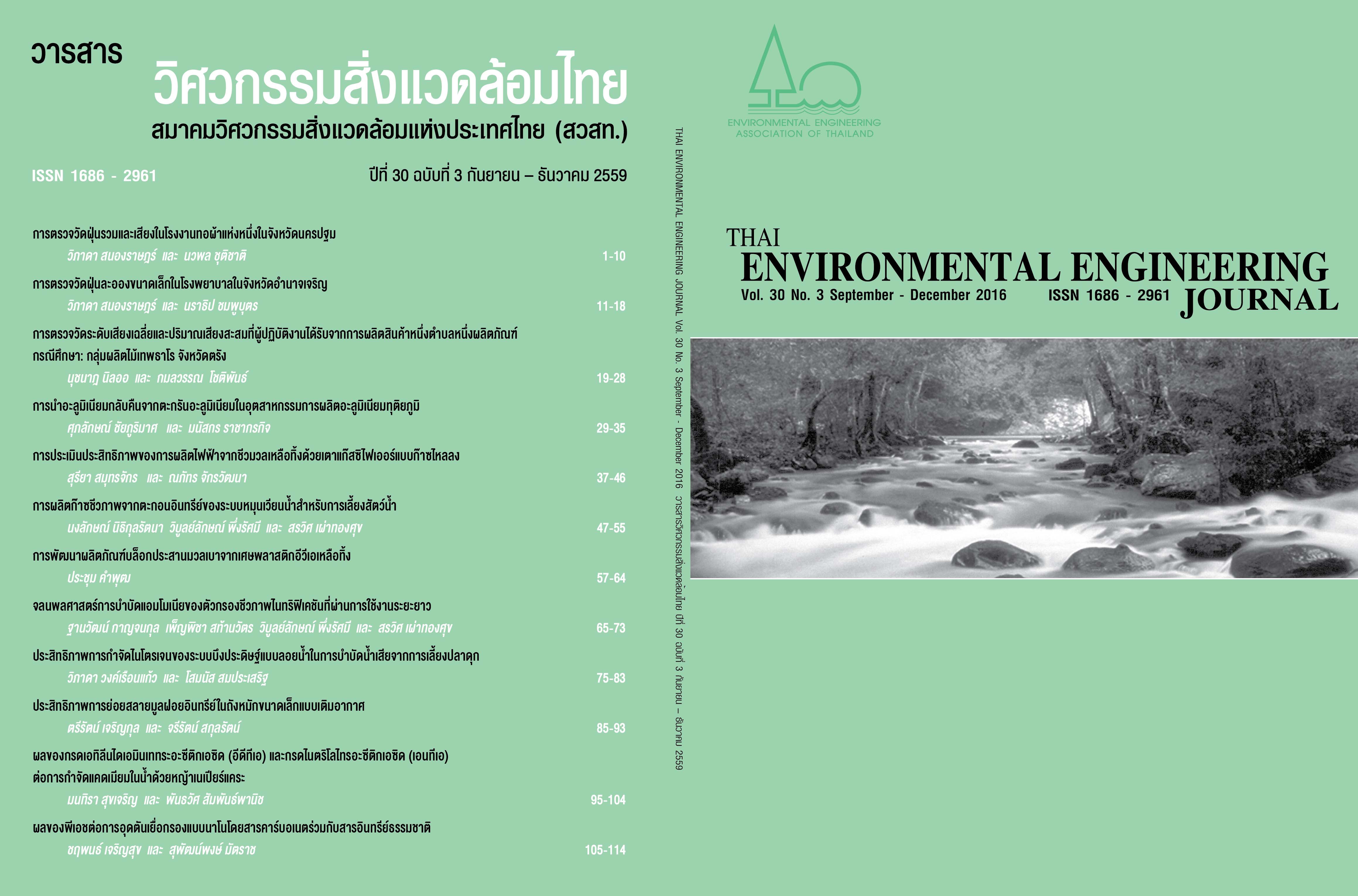Efficiency of Organic Waste Decomposition in Small-aerated Composting Bin
Main Article Content
Abstract
The objective of this research is to compare the efficiency of small composting bin between passive and active system and to determine the optimum air flow of the active system in order to enhance decomposition efficiency. Organic waste consisting of mango, banana, watermelon, pineapple, papaya, grapefruit and orange peels 8 kg in total were mixed with 4 kg of shredded leaves. Initial C/N ratio and moisture content of composting materials were 32 and 55% respectively. Small HDPE plastic bin size 60-liter (60 cm height and diameter 37 cm) was used as composting bin. Aeration rate was varied from 0, 0.3, 0.5, 0.7 to 0.9 L/min-kg organic matter in order to compare the degradation efficiency and to determine the optimum flow rate. The result showed that the composting pile with aeration rate at 0.7 L/min-kg had the highest temperature at 53 oC, higher than the passive system (44.75 oC) and the highest decomposition efficiency at 70%. The process took 21 day and pH of the final product was 6.16, C/N ratio was 15.04, potassium was 3.20% and electrical conductivity was 1.48 dS/m, which met the standard of compost. However, the moisture content was 39.4% and phosphorus was 0.3%, which did not meet the standard of compost.
Article Details
References
[2] Seo, J.Y., Heo, J.S., Kim, T.H., Joo, W.H. and Crohn, D.M. 2004. Effect of vermiculite addition on compost produced from Korean food wastes. Waste Manage. 24(10), 981-987.
[3] Hamaphat, N. 2010. Compost Bin for Household Organic Waste. A Thesis for Degree of Master of Engineering in Environmental Engineering. Prince of Songkla University. (in Thai)
[4] Wattanawongsakun, P., Pitaksapsin, N, Rudeekit, Y., Leejarkpai, T., Viyanit, E., Pinsem, W. and Chandenduang, C. 2008. Tumbler Compost Bin Design for Household and Market Place. The 22nd Conference on Mechanical Engineering Network of Thailand, 15-17 October 2551, Bangkok. (in Thai)
[5] Onthong, J. 2004. Soil and Plant Analysis Method. Faculty of Natural Resources. Prince of Songkla University. (in Thai)
[6] Li, Z., Lu, H., Ren, L. and He, L. 2013. Experimental and modeling approaches for food waste composting: A review. Chemosphere. 93, 1247-1257.
[7] Mason, I.G. and Mike, M.W. 2005. Physical modeling of composting environment: A review. Part 1: Reactor systems. Waste Manage. 25, 481-500.
[8] Polprasert, C. 1996. Organic Waste Recycles: Technology and Management. 2nd ed. West Sussex : John Wiley.
[9] Land development Department. 2011. Operations Manual The analysis of plant fertilizer and soil amendment. Land development Department Ministry of Agriculture and Cooperatives. (in Thai)
[10] lyengar, S.R and Bhave, P.P 2005. In-vessel composting of household wastes. Waste Manage. 26: 1070-1080.
[11] Tchobanoglous, G., Theisen, H. and Vigil, S., 1993. Integrated solid waste management. McGraw-Hill series in engineering principles and management issues., Singapore.
[12] Department of agriculture. 2006. Technical fertilizer manufacturing and quality standards Department of agriculture, Ministry of Agriculture and Cooperatives. (in Thai)


